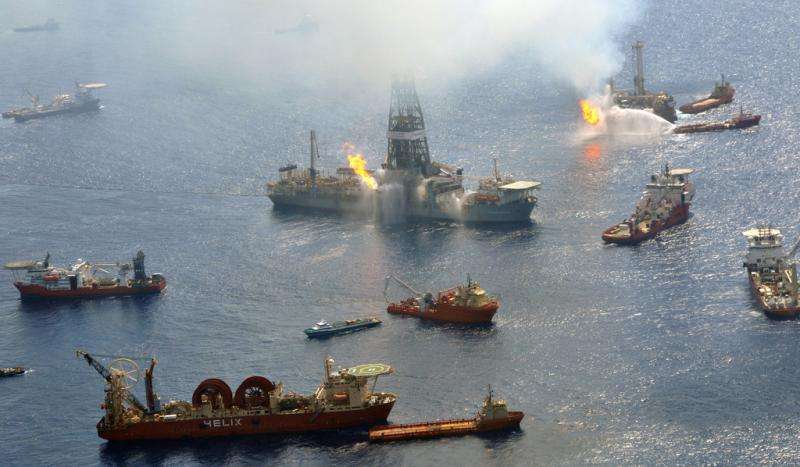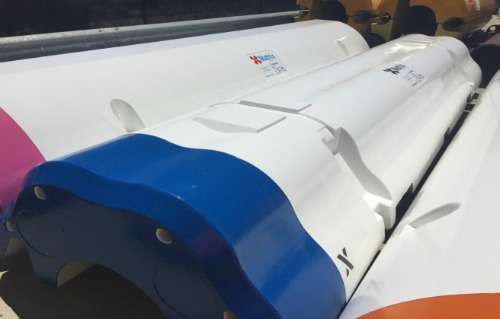The most famous case of a BOP failure was BP's oil spill and Deepwater Horizon rig exploding disaster in 2010, which will be revisited in a film starring Mark Wahlberg later this year.
An observation about tall wind-resisting cacti in New Mexico has led to a new Perth-manufactured product for the multi-billion dollar global deepwater oil industry.
The recently commercialised innovation is known as the Longitudinal Groove Suppression (LGS) drilling riser buoyancy system and was made out of syntactic foam at subsea specialising Matrix Composites and Engineering's Henderson facility.
The device was developed by Australian Marine and Offshore Group Technologies.
A multi-million dollar deal was struck in February to deploy the drilling riser at a deep-sea well in the Gulf of Mexico.
Drilling risers are typically a cylindrically-shaped pipe that connects to the failsafe-designed Blowout preventer (BOP) stack at the top of a seafloor well.
The drilling riser—which is a buoyant pipe—sucks the drilling mud up to a floating drilling rig or ship to keep drilling as safe and clean as possible.
Successful large-scale testing in Canada proved LGS could handle water current speeds of up to eight knots per hour (14.8km per hour), which is quite fast considering the ocean's gigantic mass.
The Leeuwin Current's fastest ever recorded speed is three and a half knots.
"Typically about two knots per hour and anything above that you start deflecting your riser and you run the risk of damaging your BOP," Matrix CEO Aaron Begley says.
LGS modules destined for a deepwater well in the Gulf of Mexico. Image courtesy of Matrix Composites and Engineering.
The most famous case of a BOP failure was BP's oil spill and Deepwater Horizon rig exploding disaster in 2010, which will be revisited in a film starring Mark Wahlberg later this year.
Breaking with convention, the unique grooved shape of the LGS drilling riser modules was inspired by a tall yet shallow-rooted cacti's ability to withstand hurricane winds.
Its subsea application can reduce drag and vortex-induced vibration (vortex/whirlpool or eddy-like motions on objects within underwater conditions) factors that are a major source of fatigue damage and disruptions for drilling riser systems.
Unlike conventional risers the LGS system has no moving parts to disassemble which gives operators more time to demobilise and drill ahead of a weather-forecasted event such as a tropical cyclone.
Testing has found LGS has 30 per cent less drag than conventional risers.
The resulting reduced disruption is estimated to save about 20 days per annum for Gulf of Mexico deepwater operations where drilling costs on average around $US1.5 million a day.
"Given there are 42 floaters [floating rigs and production facilities) operating in the Gulf we could save the industry literally billions per year," Mr Begley says.
Provided by Science Network WA
This article first appeared on ScienceNetwork Western Australia a science news website based at Scitech.























